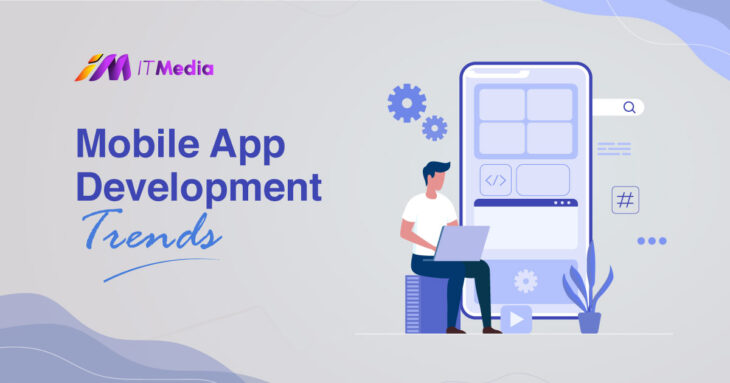
In the dynamic realm of technology, staying abreast of mobile app development trends is crucial. As the landscape evolves rapidly, developers and businesses alike must adapt to emerging technologies to remain competitive and deliver cutting-edge applications.
Rise of Cross-Platform Development
Cross-platform development has gained prominence due to its efficiency in creating applications compatible with multiple operating systems.
Cross-platform development involves creating apps that run seamlessly on various platforms, reducing development time and costs.
Tools and frameworks enabling cross-platform app development
- React Native
React Native allows developers to build native-like apps using JavaScript and React.
- Flutter
Flutter, developed by Google, is known for its expressive UI and fast development.
- Xamarin
Xamarin, a Microsoft-owned framework, facilitates the development of cross-platform apps using C#.
Progressive Web Apps (PWAs)
PWAs combine the best of web and mobile apps, offering a responsive and engaging user experience.
PWAs provide offline functionality, fast loading times, and push notifications, enhancing user engagement.
Examples of successful PWAs:
- Twitter Lite
5G Technology Impact on Mobile App Development
The advent of 5G technology is revolutionizing mobile app development by delivering unparalleled speed and performance.
5G promises faster data transfer rates and lower latency, transforming the user experience.
- Improved speed and performance
5G enables quicker app loading times and smoother interactions.
- Enhanced user experiences with low latency
Low latency ensures real-time communication and interactive features within apps.
Artificial Intelligence (AI) and Machine Learning (ML) Integration
The integration of AI and ML is reshaping the mobile app landscape, providing personalized experiences and predictive analytics.
Developers are leveraging AI and ML to create smarter and more intuitive applications.
- Personalized user experiences
Apps use AI to understand user preferences and deliver personalized content.
- Predictive analytics
ML algorithms analyze user behavior to predict future actions, enhancing app functionality.
Internet of Things (IoT) Integration in Mobile Apps
The intersection of mobile apps and IoT is unlocking new possibilities for innovative applications.
Mobile apps can now seamlessly connect and communicate with IoT devices.
- Smart home apps
Apps that control and monitor smart home devices for enhanced convenience.
- Health and fitness tracking apps
Integrating IoT for real-time health data monitoring and analysis.
Augmented Reality (AR) and Virtual Reality (VR) Experiences
AR and VR are enhancing user engagement and transforming various industries.
AR and VR technologies create immersive and interactive experiences.
- Gaming
AR and VR gaming apps provide users with a captivating and realistic gaming environment.
- Retail
Virtual try-on experiences in retail apps using AR enhance the shopping journey.
- Education
AR and VR bring subjects to life, making learning more engaging and interactive.
Mobile App Security Trends
Ensuring the security of mobile apps is paramount in an era of increasing cyber threats.
Security breaches can lead to data loss and damage to a brand’s reputation.
- Biometric authentication
Fingerprint and facial recognition technologies enhance app security.
- Secure app architectures
Developers are adopting secure coding practices and robust architectures.
User Experience (UX) and User Interface (UI) Design Trends
The success of a mobile app is closely tied to its user experience and interface design.
Intuitive design and seamless navigation contribute to user satisfaction.
- Dark mode
Dark mode reduces eye strain and conserves battery life.
- Gesture-based navigation
Intuitive gestures enhance user interactions and make navigation smoother.
Cloud Integration for Mobile Apps
Cloud integration offers scalability, flexibility, and cost-effectiveness in mobile app development.
Cloud services provide storage, processing power, and seamless data synchronization.
Examples of cloud-based mobile applications
Apps like Dropbox and Google Drive leverage cloud services for data storage and collaboration.
Accessibility and Inclusivity in Mobile App Development
Designing apps with diverse user needs in mind ensures inclusivity and broadens the user base.
Apps should be accessible to users with disabilities and different preferences.
Trends in making mobile apps more accessible and inclusive
Developers are incorporating features like voice commands and screen readers for better accessibility.
Conclusion
In conclusion, staying informed about mobile app development trends is essential for creating innovative and successful applications.
As technology continues to evolve, embracing these trends ensures that developers and businesses remain at the forefront of the ever-changing mobile app landscape.
The future promises exciting possibilities, and those who adapt will thrive in the competitive world of mobile app development.
#FAQs
- What is the significance of staying updated on mobile app development trends?
- Staying updated on mobile app development trends is crucial for developers and businesses to meet evolving user needs, remain competitive, and deliver cutting-edge applications that resonate with users.
- How does cross-platform development benefit mobile app development?
- Cross-platform development reduces development time and costs by enabling the creation of apps compatible with multiple operating systems. Frameworks like React Native, Flutter, and Xamarin facilitate this efficient approach.
- What are the key implications of 5G technology on mobile app development?
- 5G technology brings improved speed and performance to mobile apps, enabling faster loading times and smoother interactions. It also enhances user experiences with low latency, allowing for real-time communication and interactive features.
- How are AI and ML integrated into mobile app development, and what benefits do they offer?
- AI and ML play a growing role in mobile app development, offering personalized user experiences by understanding preferences and providing predictive analytics to enhance app functionality.
- What are the examples of successful applications integrating IoT, AR, and VR in mobile app development?
- Examples include smart home apps that control IoT devices, health and fitness tracking apps leveraging IoT for real-time monitoring, and AR/VR applications in gaming, retail, and education for immersive and interactive experiences.